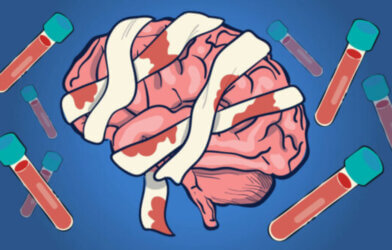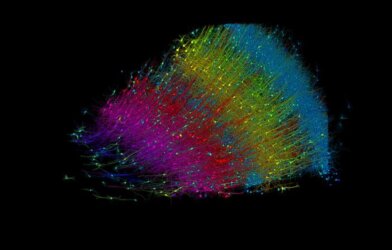Prescription steroids, such as inhalers for people with asthma, may change the structure of the brain, according to scientists. A new study from The Netherlands reports that steroids may affect the shape and volume of white and gray brain matter.
Previous research has observed long-term steroid users developing multiple neuropsychiatric disorders such as anxiety, depression, mania, and delirium.
Some of the most commonly used steroids are glucocorticoids, which have immunosuppressive effects and are used in a wide range of conditions. Prescription steroid use is estimated to be between 0.5% and 3% in high-income countries. While both systemic and inhaled steroids are a good choice, they carry some risks. Both types of steroids have been linked to metabolic, cardiovascular, musculoskeletal, and neuropsychiatric side effects.
One prominent change from medical steroid use is structural abnormalities and the shrinking of certain brain regions. But studies looking into steroids and their effects on the brain have focused on a small group of people with specific conditions.
The current research involved collecting data from the UK BioBank which contains the information of half a million people between the ages of 40 to 69. They analyzed the data of steroid users and searched for any detectable differences in brain volume and structure. Another topic of interest was how steroid use affected differences in processing speed and emotional responses.
Brain scans of 222 people using systemic steroids and 557 using inhaled steroids were compared with 24,106 non-users. They had diagnosed none of the participants with any neurological, psychiatric, or hormonal disorder. Participants also were not taking mood-altering drugs. The participants filled out a questionnaire on their mood the night before.
In the MRI scans, the team observed an association between systemic and inhaled steroid use with less white matter structure compared to the scans of nonusers. White brain matter is essential for brain connectivity and communication between areas.
The changes in white brain matter were greater in people who used systemic versus inhaled steroids. They suggest the changes would most likely increase depending on how long you use the medication.
Steroid use affected gray matter in the part of the brain involved in cognitive and emotional processing. The researchers observed a larger caudate in those using systemic steroids compared to non-users. The brains of inhaled steroid users showed a smaller amygdala.
When steroid users took a cognitive and psychiatric test, they performed worse in processing speed and reported significantly more depressive symptoms such as apathy, fatigue, and restlessness than nonusers.
The study comes with several limitations. First, researchers looked at only a small subset of mood changes and only for two weeks. There is also a possibility the mood changes may have resulted from the condition the steroids were treating, and not the treatment itself. The team could also not tell the difference between users who used steroid tablets versus infusions, which may have influenced the results.
The study is published in the journal BMJ Open.












